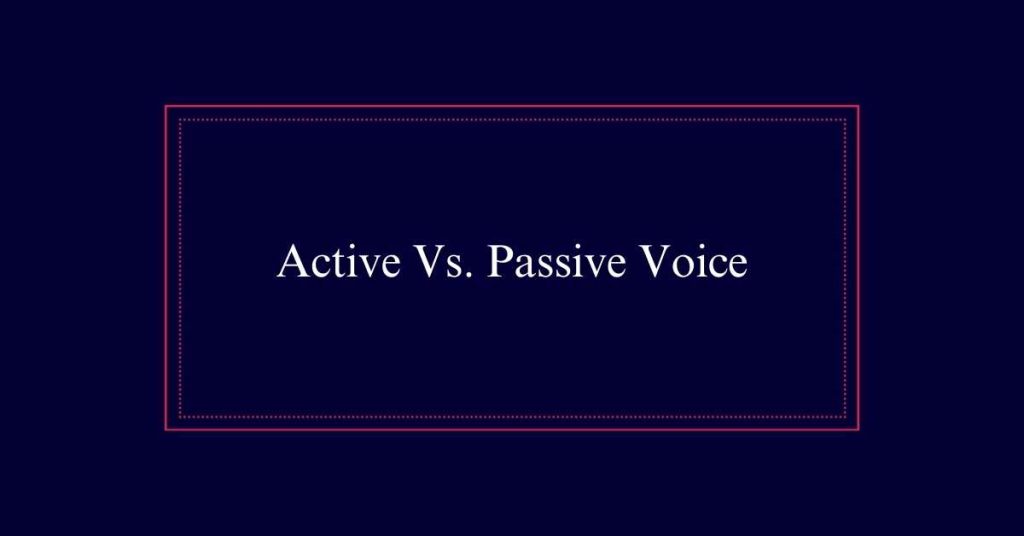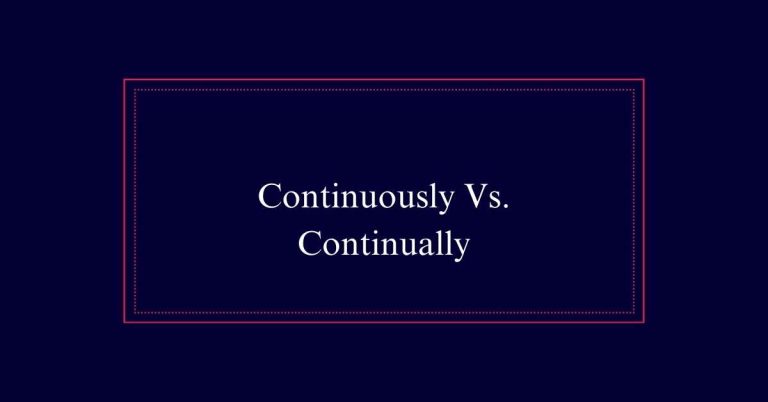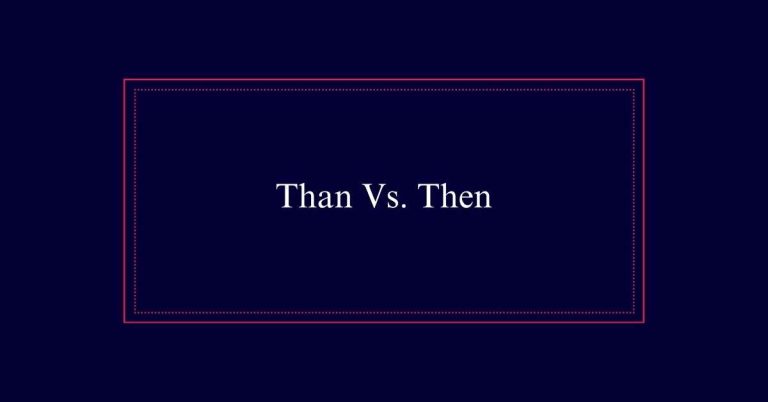Active Vs. Passive Voice
Active voice occurs when the subject of a sentence performs the action, creating direct and clear communication—ideal for engaging readers. For example, “The chef cooked the meal.” In contrast, passive voice shifts the focus to the action’s target, often using a form of ‘to be’ plus the past participle.
This structure is common in scientific writing to emphasize results or maintain objectivity, such as “The meal was cooked by the chef.” Active voice is concise and dynamic, whereas passive voice can be more formal and less direct.
Understanding Active Voice
Understanding the active voice begins with recognizing that the subject of the sentence performs the action. This structure creates a direct and clear tone, making it easier for the reader to comprehend the message.
For example, in the sentence ‘The manager approved the report,’ the manager (subject) performs the action of approving. Active voice sentences are often more engaging and dynamic, focusing on who is doing what. This makes active voice particularly effective in news reporting, where clarity and brevity are essential.
Understanding Passive Voice
In passive voice, the focus shifts from the subject performing the action to the action’s target. This construction often includes a conjugated form of ‘to be’ followed by a past participle. Passive voice can be useful in certain contexts where the action’s target is more important than the doer. It is commonly used in scientific writing to maintain objectivity and in situations where the doer is unknown or irrelevant.
Key characteristics of passive voice include:
- The subject receives the action.
- The doer is often omitted or deemphasized.
- Sentences tend to be longer and more complex.
- Suitable for emphasizing the action’s result.
Key Differences
The primary distinction between active and passive voice lies in the focus of the sentence. In active voice, the subject performs the action, making sentences more direct and clear. For example, ‘The researcher conducted the experiment’ places emphasis on the researcher.
Conversely, passive voice shifts the focus to the action’s target. For example, ‘The experiment was conducted by the researcher’ emphasizes the experiment itself.
Active voice generally uses fewer words and maintains a straightforward tone. It involves a subject, verb, and object structure. Passive voice typically includes a form of the verb ‘to be’ combined with a past participle, which can make sentences longer and more complex.
Benefits of Active Voice
Active voice enhances clarity and directness in writing. It guarantees that the subject of the sentence is performing the action, making the sentence straightforward and easy to understand. This approach is particularly valuable in professional and academic contexts where clear communication is crucial.
Improved Readability: Sentences are easier to read and follow.
Stronger Statements: The subject’s actions are emphasized, making statements more impactful.
Conciseness: Active voice often requires fewer words, making writing more concise.
Engagement: Readers are more engaged when sentences are direct and to the point.
Benefits of Passive Voice
Passive voice offers distinct advantages, especially in maintaining objectivity and emphasizing results over actions. This is vital in scientific writing, where the focus is on what was done rather than who did it.
Passive voice removes the subject, allowing the data or findings to take center stage. This helps in presenting information impartially, which is essential in research and technical documents.
Additionally, passive voice is useful in situations where the doer is unknown or irrelevant. It can also create a formal tone, which is sometimes desirable in professional writing.

Identifying Active Voice
Recognizing when a subject performs an action can help you identify active voice in writing.
In active voice, the subject of the sentence actively performs the action expressed by the verb. This structure is straightforward and engaging.
To identify active voice, look for:
- Subject before verb: The subject comes before the verb and performs the action.
- Direct action: The action is directly linked to the subject.
- Clear tone: Sentences are clear and concise.
- No auxiliary verbs: Typically, no forms of ‘to be’ are used with the main verb.
For example, in the sentence ‘The cat chased the mouse,’ the subject (the cat) performs the action (chased).
Identifying Passive Voice
In passive voice, the focus often shifts to the recipient of the action rather than the doer. To identify passive voice, look for sentences where the subject is acted upon.
These sentences usually contain a conjugated form of ‘to be’ (e.g., is, was, were) followed by a past participle (e.g., written, done).
For example, ‘The report was completed by the team’ is in passive voice because the report is the focus, not the team. Often, the doer of the action is introduced by the word ‘by.’
When to Use Active
Active voice should be used when you want to create clear, direct, and engaging sentences. It helps writers to convey their message more effectively and maintain the reader’s interest. The active voice emphasizes the subject and its actions, making the writing more dynamic and vigorous.
Use active voice in the following scenarios:
- Instructions and guides: Clear commands and steps are easier to follow.
- Storytelling and narratives: Engages readers by focusing on the characters’ actions.
- Persuasive writing: Strengthens arguments by clearly stating who is responsible for actions.
- Business communication: Direct messages reduce misunderstandings and convey professionalism.
When to Use Passive
While active voice often enhances clarity and engagement, passive voice is appropriate when the focus needs to be on the action or result rather than the doer.
In scientific writing, passive voice is used to maintain objectivity and emphasize the experiment or findings. For example, ‘The experiment was conducted to test the hypothesis’ centers on the experiment rather than the scientist.
Passive voice is also useful in situations where the doer is unknown or irrelevant. In legal or formal documents, it can soften the tone, making the language more neutral. For instance, ‘Mistakes were made’ avoids assigning blame.
Therefore, passive voice serves important roles in maintaining focus and tone in various contexts.
Converting Passive to Active
To convert passive sentences to active, start by identifying the subject performing the action. This step is vital as it shifts the focus to the doer of the action.
Once identified, restructure the sentence to place the subject at the beginning. This often results in clearer, more direct sentences.
Consider these steps:
- Identify the subject: Determine who or what is performing the action.
- Reorder the sentence: Place the subject before the verb.
- Adjust the verb: Make sure the verb accurately describes the action.
- Remove unnecessary words: Eliminate extra words that do not add value.
For example, change ‘The report was written by the manager’ to ‘The manager wrote the report.’ This makes the sentence more engaging and straightforward.






